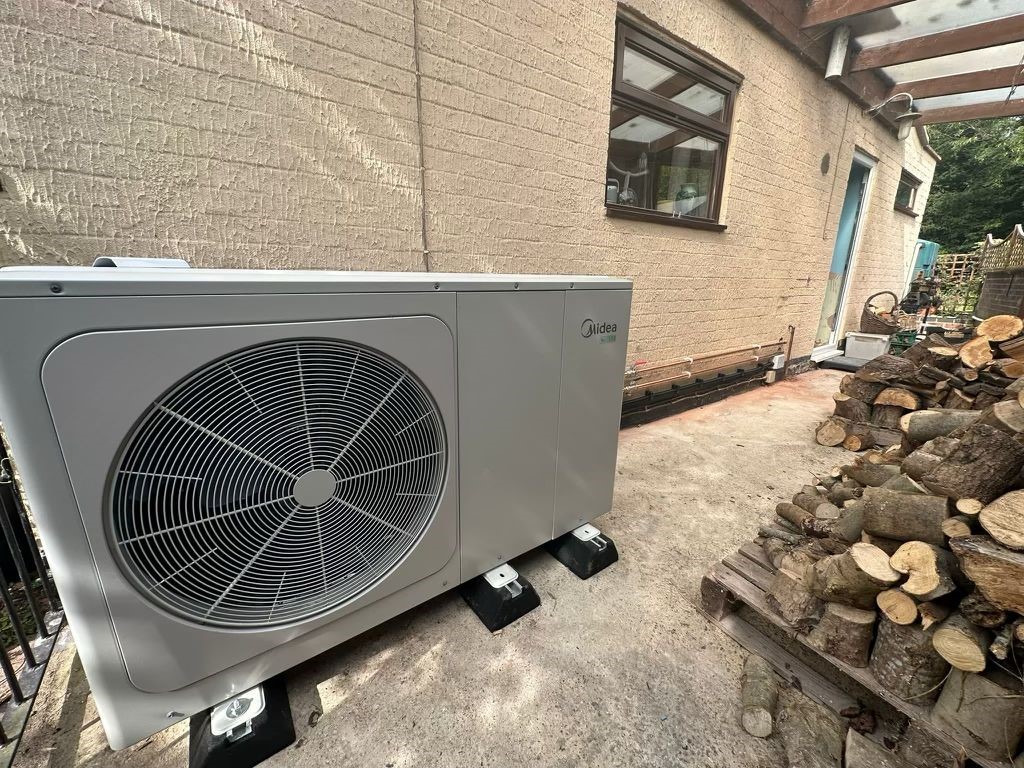New Heat Pump Rules: What They Mean for UK Homeowners
In May 2025, the UK government introduced significant changes to the permitted development rights (PDR) for heat pumps in England. These updates aim to simplify the heat pump installation process, making it easier for homeowners to adopt renewable heating systems. Let’s delve into what these changes entail and how they impact you.
Key Changes to Heat Pump Regulations
1. Installation Proximity to Property Boundaries
Previously, heat pump installation required maintaining a minimum distance of one metre from property boundaries. This restriction often posed challenges for homeowners with limited outdoor space, particularly in terraced or semi-detached houses. The new regulations have removed this requirement, allowing installations closer to property lines and providing greater flexibility in unit placement – a significant improvement for both air source heat pump installation and ground source heat pumps.
2. Increased Unit Size Limit
The maximum allowable size for heat pump units has been increased from 0.6 cubic metres to 1.5 cubic metres. This change accommodates larger, more efficient models suitable for homes with higher heating demands, enhancing the effectiveness of renewable heating systems across various property types.
3. Allowance for Multiple Units on Detached Homes
Under the updated rules, detached properties can now install up to two heat pumps without requiring planning permission. This is particularly advantageous for larger homes needing greater heating capacity or those with outbuildings requiring separate systems.
4. Inclusion of Air-to-Air Systems
Air-to-air heat pump systems, which provide both heating and cooling solutions, are now included under permitted development rights. This inclusion reflects the growing demand for year-round climate control solutions and offers homeowners more versatile options for indoor comfort, alongside other renewable heating system options.
5. Updated Noise Compliance Standards
Under the new permitted development rules, heat pump installation must comply with the updated MCS 020 noise assessment standard. This standard is based on two key acoustic concepts: Sound Power Level and Sound Pressure Level. Sound Power Level is the logarithmic ratio of a sound source’s total emitted energy per unit of time compared to a reference value. It represents the full acoustic output of a unit, regardless of its environment. In contrast, Sound Pressure Level is the logarithmic ratio of the sound pressure — the variation in air pressure caused by the sound wave — relative to atmospheric pressure at a specific location. It indicates how loud the sound is at a given point, such as a property boundary. The MCS 020 standard uses these measures to ensure that installed heat pumps do not exceed acceptable noise limits, protecting both residents and neighbours from excessive disturbance.

Implications for Homeowners
Simplified Installation Process
The UK government’s recent relaxation of planning restrictions has made it significantly easier for homeowners to adopt heat pump installation, particularly by scrapping the rule that required units to be placed at least one metre from a property boundary. This change aims to reduce the number of applications that stall due to planning red tape and streamline the installation process. According to a government announcement reported by Reuters, over a third of customers who begin the process of ordering a heat pump drop out due to planning issues. Simplifying these rules is expected to cut delays, lower costs, and encourage wider adoption across the country.
Enhanced Property Suitability
By removing the one-metre boundary rule and allowing larger units, more properties – especially those in urban areas with limited space – can now accommodate air source heat pump installation or ground source heat pumps. This broadens the potential for homeowners to adopt renewable heating systems and increase energy efficiency.
Financial Incentives
Homeowners in England and Wales can access grants of £7,500 towards the cost of heat pump installation under the Boiler Upgrade Scheme. These financial incentives aim to offset upfront costs and encourage the adoption of renewable energy systems.
Considerations Before Installation
- Property Type Restrictions: While detached homes can install two units under permitted development, other property types may have different limitations. It’s essential to verify the specific regulations applicable to your property.
- Noise Compliance: Ensure that any heat pump installation meets the updated MCS 020 noise standards to avoid potential issues with neighbours.
- Professional Installation: Engaging certified professionals for installation can help ensure compliance with all regulations and optimal system performance. You may also consider a full project feasibility report to assess site-specific needs and options.
- Listed Buildings and Conservation Areas: If your property is listed or located within a conservation area, additional permissions may be required. Consult with your local planning authority to understand the necessary steps.
Conclusion
The recent changes to heat pump permitted development rights represent a significant step towards promoting renewable heating systems in the UK. By simplifying the installation process and expanding the types of systems covered, these updates make it more feasible for homeowners to transition to energy-efficient technologies. As the UK continues to pursue its climate goals, embracing such advancements can contribute to a greener, more sustainable future.
With planning restrictions eased and generous government grants available, there’s never been a better time to switch to renewable heating systems. Whether you’re retrofitting your current property or building new, our expert team can guide you through the entire process – from project feasibility analysis to MCS-accredited heat pump installation.
Contact Us today to book a free consultation and take the first step towards a warmer, greener future.
